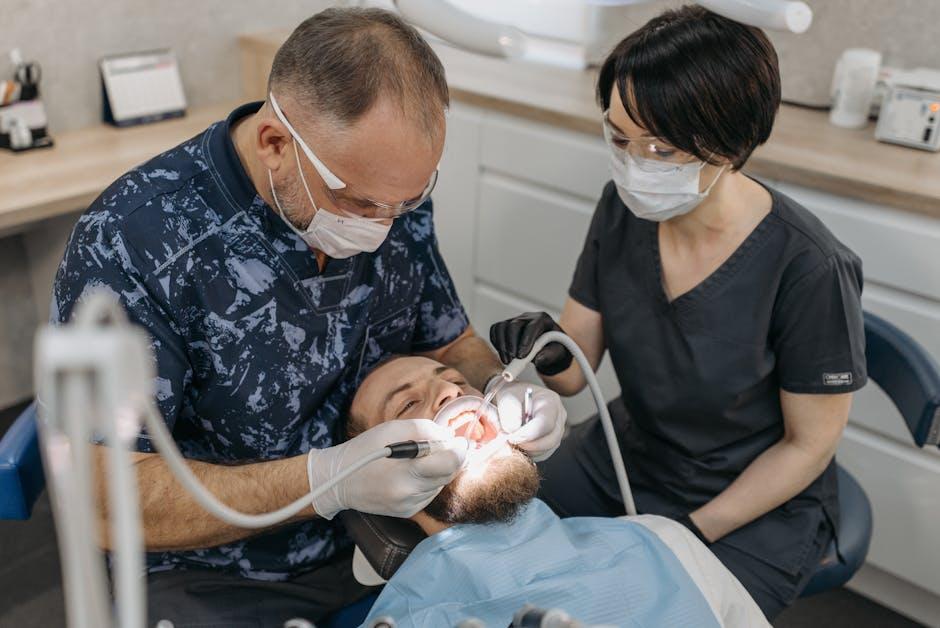
The Barriers to Oral Health Care Illustration – Centers for Medicare & Medicaid Services | CMS (.gov)
Oral health is a critical component of overall wellness, yet millions of Americans face significant barriers when trying to access quality oral health care. The Centers for Medicare & Medicaid Services (CMS) provides key insights through its Barriers to Oral Health Care Illustration, highlighting the key challenges that hinder equitable access to dental services. Understanding these barriers is essential for policymakers, health care providers, and patients alike as we strive toward improved oral health outcomes. In this article, we’ll explore the core obstacles outlined by CMS, discuss the implications, and offer practical strategies to overcome these barriers.
Understanding the CMS Barriers to Oral Health Care
The CMS illustrates several crucial barriers that impact oral health care accessibility for Medicare, Medicaid, and other beneficiary populations. These barriers often stem from a combination of socioeconomic factors, systemic challenges, and limited resources. Key barriers include:
- Financial Constraints: High out-of-pocket costs, lack of dental insurance coverage, and low reimbursement rates for providers.
- Provider Availability: Shortage of dental care providers who accept Medicare or Medicaid, especially in rural and underserved areas.
- Geographical Barriers: Distance to dental clinics, lack of transportation, and geographically isolated populations.
- Health Literacy: Limited patient knowledge about the importance of oral health and available services.
- Cultural and Language Barriers: Language differences and cultural beliefs impacting patient-provider communication and trust.
- Systemic Barriers: Complex enrollment processes, fragmented care coordination, and inadequate integration of dental care with general health care.
Why These Barriers Matter
Oral health is closely linked to chronic conditions such as diabetes, heart disease, and respiratory infections. Barriers to care not only cause untreated dental disease but also exacerbate these systemic health issues, leading to increased hospitalizations, higher health care costs, and reduced quality of life. CMS emphasizes that overcoming these obstacles can dramatically improve health outcomes, reduce disparities, and promote healthier communities.
Detailed Breakdown: Key Barriers and Their Impact
| Barrier | Description | Impact on Patients |
|---|---|---|
| Financial Constraints | Costs not covered by insurance, low Medicaid/Medicare dental benefits | Delayed or avoided dental treatment, worsening oral health |
| Provider Availability | Limited dentists accepting public insurance | Long wait times, travel challenges for care access |
| Geographical Barriers | Rural and remote residence without nearby clinics | Difficulty routinely accessing preventive care |
| Health Literacy | Limited understanding of oral health importance | Poor self-care, low dental service uptake |
| Cultural & Language Barriers | Communication challenges / mistrust of providers | Underutilization of available dental resources |
| Systemic Barriers | Complex healthcare navigation and poor care integration | Fragmented care, missed follow-ups, inconsistent treatment |
Benefits of Overcoming Oral Health Care Barriers
Addressing these barriers has demonstrated numerous advantages for individuals and health systems, including:
- Improved Overall Health: Better oral health reduces risks of systemic diseases.
- Cost Savings: Preventive care lowers emergency room visits and advanced dental treatments.
- Health Equity: Reduces disparities among underserved and vulnerable populations.
- Enhanced Quality of Life: Reducing pain, tooth loss, and improving nutrition and self-esteem.
- Better Care Coordination: Integrated dental and medical care improves patient outcomes and satisfaction.
Practical Tips to Navigate Oral Health Care Barriers
For patients, caregivers, and providers striving to bridge the gap in oral health care access, here are actionable tips to overcome common challenges:
1. Explore Medicaid and Medicare Dental Benefits
Though Medicare has limited dental coverage, Medicaid programs vary by state. Checking local state Medicaid plans can uncover valuable dental benefits, including preventive and emergency services.
2. Utilize Community Health Clinics and Dental Schools
Federally Qualified Health Centers (FQHCs) and dental schools often provide affordable dental care sliding-scale fees or free care for eligible patients.
3. Improve Health Literacy
Encourage self-education through trusted CMS resources, community programs, and clear communication from dental staff to empower patients in oral hygiene and preventive care.
4. Advocate for Provider Acceptance
Community advocates can work with local dental providers and health departments to increase acceptance of Medicaid and Medicare beneficiaries.
5. Use Tele-dentistry Services
In rural or isolated areas, tele-dentistry offers virtual consultations, oral health education, and triage services to reduce travel and improve timely care.
6. Foster Cultural Competency
Providers should undergo cultural sensitivity training and use professional interpreters when necessary to ensure clear communication and build trust.
Case Study: Washington State’s Approach to Dental Access
Washington State expanded its Medicaid dental benefits and increased funding for community clinics, resulting in a 25% increase in regular dental visits among low-income adults over three years. By simplifying enrollment and integrating oral health with primary care, the state showcased the tangible benefits of addressing CMS-identified barriers.
Conclusion: Moving Toward Equitable Oral Health Care
The CMS Barriers to Oral Health Care Illustration sheds light on the multifaceted obstacles millions face in accessing dental services. By recognizing these challenges—in financial, geographic, systemic, and cultural contexts—we can tailor interventions and policies to ensure no one is left behind. Improved oral health access is essential not just for brighter smiles, but for healthier lives and communities. Whether you’re a patient navigating care or a provider seeking solutions, understanding and overcoming these barriers is a critical step in advancing oral health equity nationwide.
By utilizing CMS resources, engaging in community solutions, and advocating for policy reforms, the dream of accessible and comprehensive oral health care for all can become a reality.


